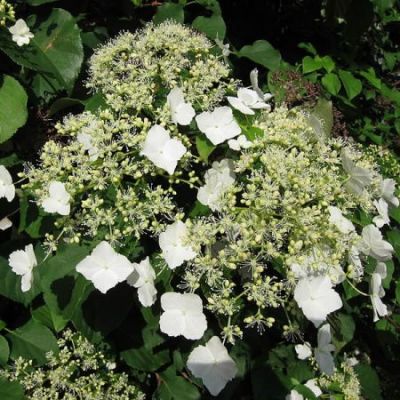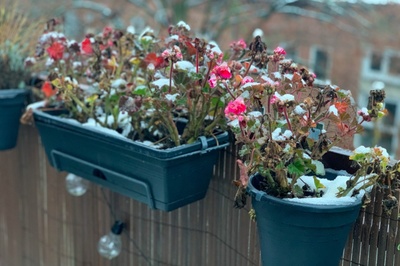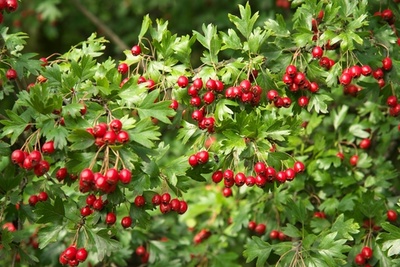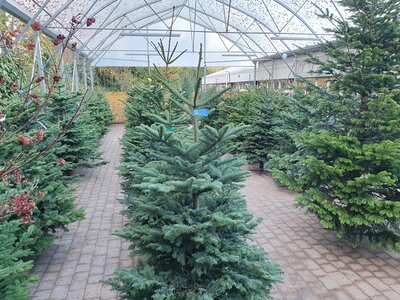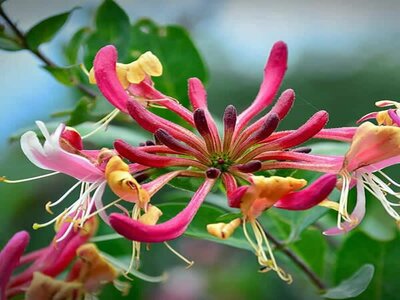
Planting climbers is similar to planting anything else with just a few extra considerations. Unlike other plants which are grown out in the open in a bed or border, your climbers are generally going to be trained up some kind of structure and in the case of walls and fences the soil near them is often poor. The structure itself can prevent rain-water reaching the ground. In such cases it is best to plant the climber 30-45cm away from the wall or fence and ensure the ground is properly prepared with plenty of organic matter, preferably to about 2 spades depth.
Steps to Planting your Climber
- If you are adding a trellis or any kind of additional supports, make sure you have these in place prior to planting as, frankly, its a pain trying to sort this out around the plant afterwards and may even lead to damaging the plant or its roots.
- Give the potted plant a good soak, up to an hour before planting.
- Dig your hole so that, in most cases, the top of the root-ball is at soil level. You don't want to be planting the climber any deeper than it was in the pot. The only exceptions to this are clematis, which benefit from the root-ball being planted 10-15cm deeper as they prefer their roots to be kept cool and shaded.
- Climbing roses should always have the graft union at soil level – this should be easily identifiable by the fact that you will see a knobbly joint on the main stem just above the soil surface when you buy it in the pot.
Tip: It is often a good idea to tilt the root-ball to a 45 degree angle so that the main stem is pointed towards the structure you want the plant to grow up.
- All you need to do then is back-fill and give your plant a good water – paying particular attention to watering in any dry spells during the first season. In terms of training, this will depend on the type of climber. In the case of self-clinging plants such as ivy, you may need to just bridge the gap between the planting position and the wall or fence, with a few canes. For those that require trellises and supports you will just need to tie the stems in initially to start them off.
With many climbers it is often better to train the initial side shoots or branches horizontally to create a good spread. You should then get a number of side shoots from each of those that you can train vertically.
Growing Climbers Up Other Plants
This can be a great way of adding another season of interest to trees, shrubs and evergreens. It is important when doing this that you plant the root-ball far enough away from the main plant so as to not damage the roots of the supporting plant. Again, you can tilt the root ball of you climber at a 45 degree angle to have it headed towards your supporting plant, and you may need to add a cane or string to bridge any gap. As climbers always head towards the sun, it is best to plant them on the shady, north side of the supporting plant – this is particular true of clematis as they like their “feet in the shade and heads in the sun”.
Ongoing Care and Maintenance
You will need to ensure regular watering of your climbers for at least the first growing season to ensure they become well established. This is particularly true of those growing against walls, fences and under house eaves where they may be sitting in a “rain shadow” and not getting much natural rain-water.
As your climbers come into flower it is beneficial to add a fertiliser or feed that is high in potassium as this will generally encourage more blooms.
You then just need to keep the base of the plants clear of weeds. The best way to prevent weeds and ensure the ground retains moisture and a good amount of nutrients is to add a good thick mulch before winter sets in, making sure the mulch is around the plant but not touching the stem (as this can cause rot or fungal issues).
Pruning
How you do this will really depend on the type of climber you have and is usually carried out in late winter or early spring. Some plants flower on new growth and others on old growth, some climbers need to be cut back hard every year and others can be left to ramble freely, so it is worth looking at the requirements of your specific climber when it comes to pruning as getting this wrong can result in a poor or even no display.
If you're in any way unsure of which climber is best for you or how to get your particular climber started or maintained, then please do speak to one of our friendly staff members who will be happy to help.

